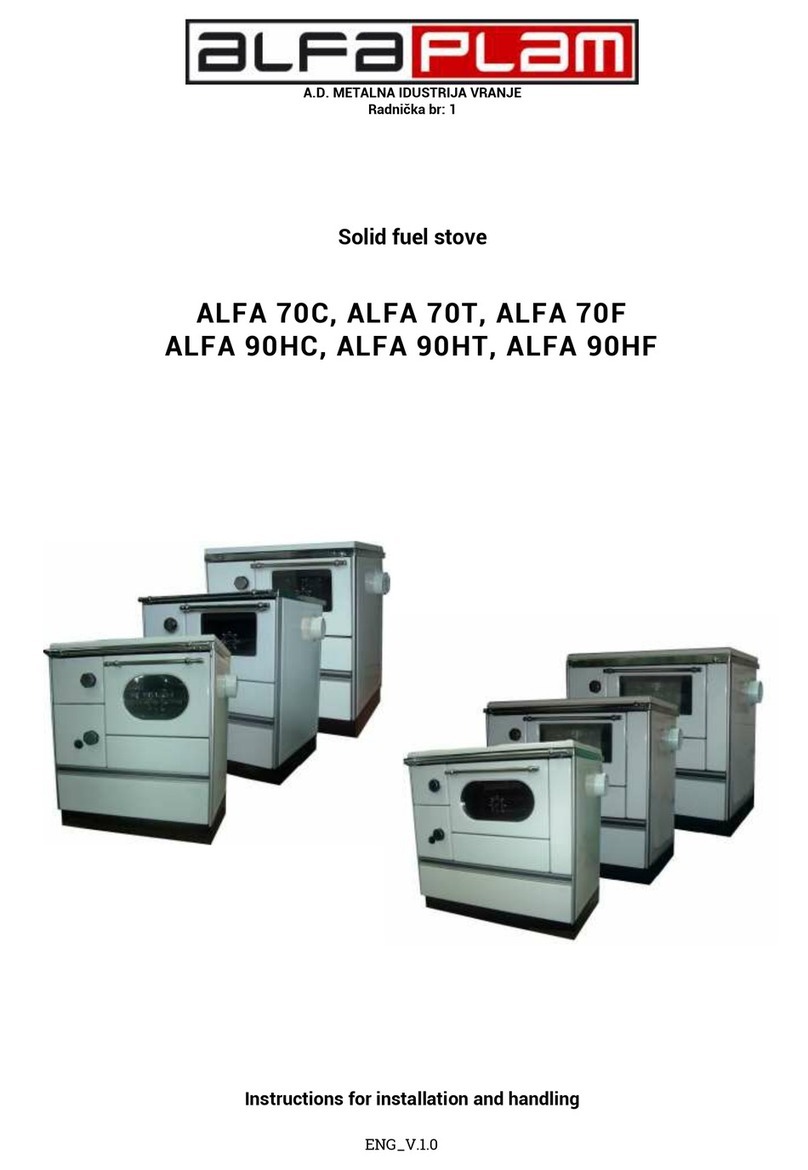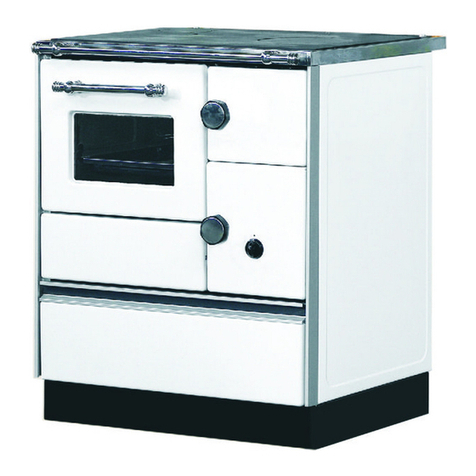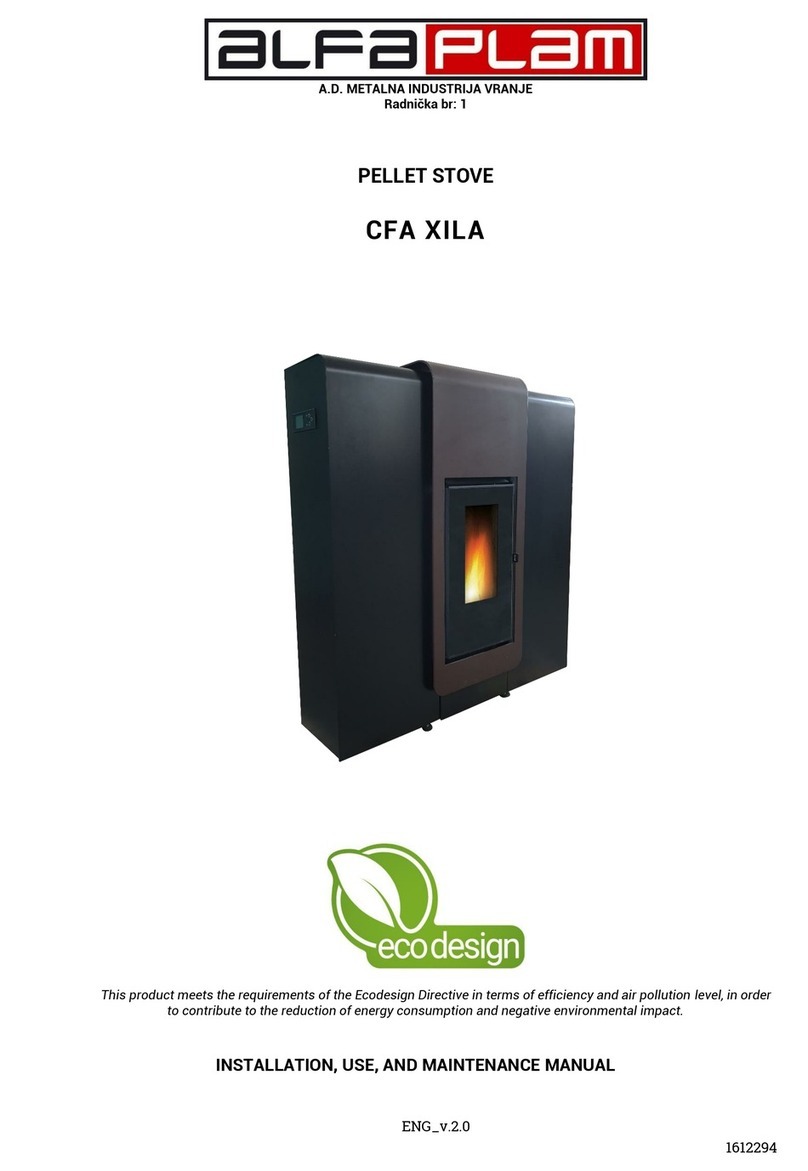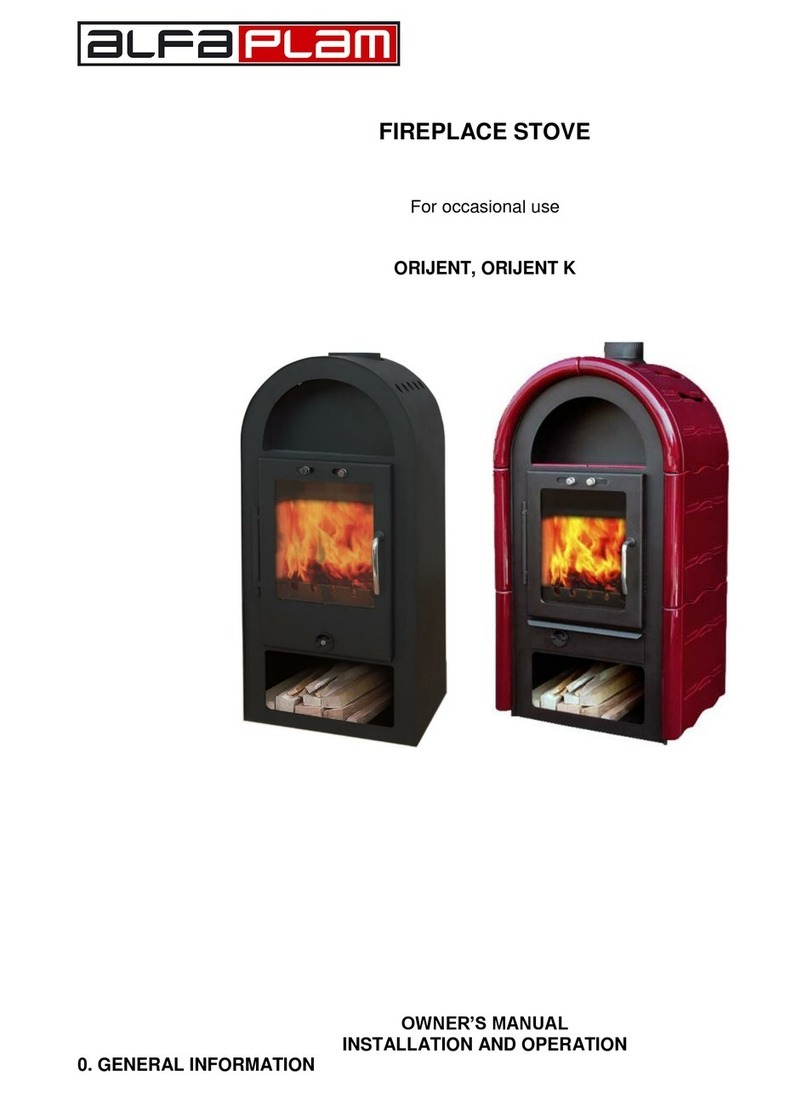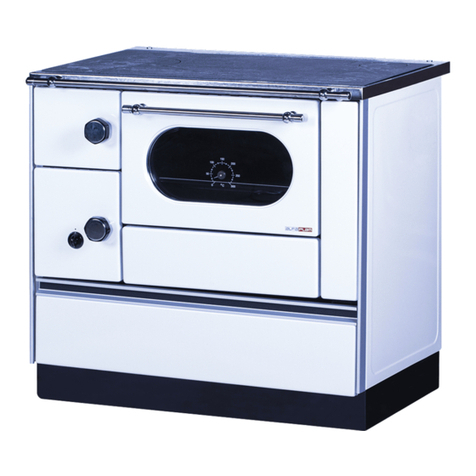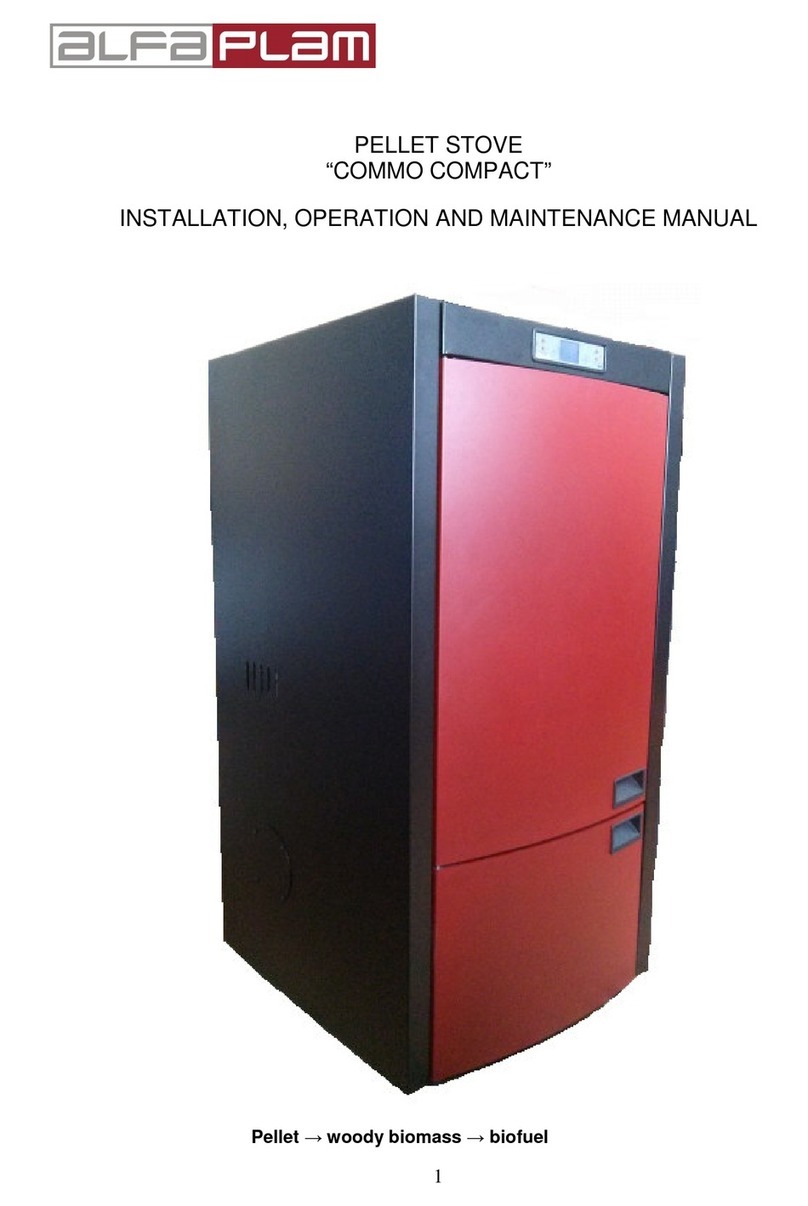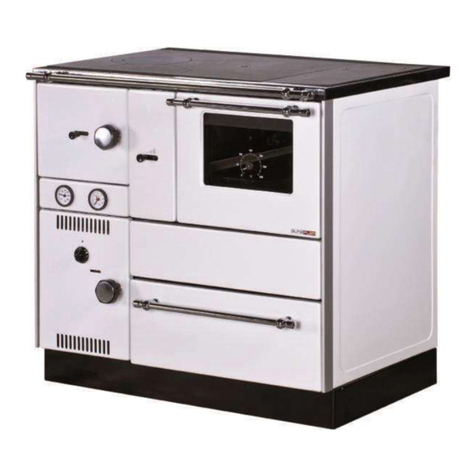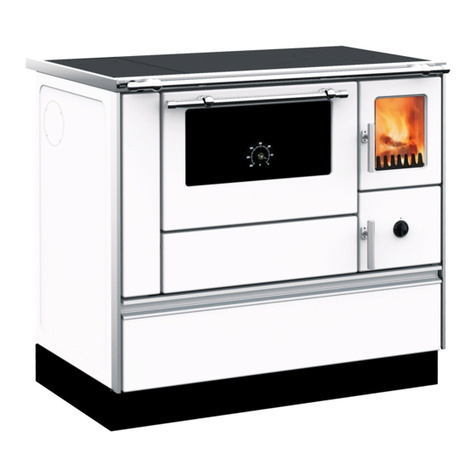
3
* Open the sliding handle for primary air at the highest level of air release.
( figure 3, position 9 )
* Open the firebox door
* Insert wood wool, sawdust or paper
* over this, put 2-3 small wood pieces
* Ignite
* Close the door of the firebox
* Let the wood burn lively
* After stoking, press in the heating flab knob, the heating flap is closed.
4.2. ADDING FUEL
Upon creating the basic ember, you need to add fuel in the opening for filling. Position the sliding handle for air on the
appropriate position,
When adding fuel, lightly open the door of the firebox without pulling out flue gases, in this manner you will avoid having flue
gases in the room.
The rated heating capacity is achieved when you put the next fuel quantity and you adjust:
Adjustment of primary air
Make sure than you never put more wood or briquettes than it is really required for the rated capacity of heating.
The above indicated fuel quantity must not be exceeded because this may cause overheating of the stove.
Only natural dry wood may be used according to the regulations on emission protection. The wood being used must be dry
(humidity residual, 20%)
This is usually the case when wood is stored for two years in a dry spot where there is good ventilation.
Wet wood has low calorific value and causes soot deposits in the flue channels and in the flue.
Wood with treated upper surface (coated, painter, veneered and impregnated, plywood, waste of any kind (waste from
packaging), plastics paper, rubber, leather, textile etc. must not be stoked.
The combustion of such materials pollutes the environment and it is prohibited by law. Besides this, damages of the flue
may also occur. In this case, all kinds of guarantee by the manufacturer cease.
Unfavorable conditions and insufficient draught in the flue my cause obstructions so the flue gases are not entirely taken
away. In this case you should eliminate the causes in the flue, otherwise the use of the chimney is not allowed due to safety
reasons.
Note: Better usability of fuel, thereby better heating of space is established by slightly or completely opening the oven door.
4.3. COOKING
4.3. 1. COOK IN G DURIN G SUMMER
During warm days, the stove on solid fuel is used mainly for cooking. The oven door is kept closed. The best is to use a pot
with a heavy bottom and a corresponding cover.
4.3. 2. COOK IN G DURIN G W INTER
During cold days, the solid fuel stove is used mostly for heating of rooms. In order to cook faster, use dry woods.
The heating flap must be closed and the air regulation must be maximally open.
Upon termination with cooking, you should put the air regulation in a position for rated heat capacity.
4.4. BAKING COOKIES AND BAKING PASTRY
For baking cookies and baking pastry, evenly distributed heat is required.
In order to achieve this evenness and sufficiently high temperature, the oven must be closed and the heating flap must be
closed. Depending on the type of food which is baked, the oven must be heated in advance. It the stove has heated up to the
desired temperature, but what you plan to bake inside the oven. Do not let creation of a very strong ember, you should rather
frequently add fuel in small quantities.
Put high baking molds in the lower groove of the oven. You should bake all cookies with such shape on a moderate
temperature. At flat cookies or pastry both grooves may be used. During this, we recommend slightly higher oven temperature.
For baking pasty you need importantly higher temperature than when baking cookies. Hence, the time of preparation (with
prior warming) is a bit longer and necessary…
4.5. STOKING IN A TRANSITORY PERIOD
At outdoor temperatures over 15ºC s that on the basis of low transporting pressure, small fire in the flue occurs. This creates
more soot in the flue channels of the stove and the flue. Increase the inflow of primary air and make more frequent ember
burning and more frequently add small pieces of cleaved wood in order to reduce the soot in the transitory period.
5. MAINTENANCE AND CLEANING OF THE STOVE
Regular maintenance and care such as cleaning of the stove, the flue channels and flue extension is important for safe
operation and thriftiness.
Maintenance of enameled surfaces of the stove is recommended only in cold state.
The stove is cleaned with clean water and soft towel and in separate cases, with suds as well.
The cleaning intervals depend mostly on the use of fuel, the period of use of the stove and the manner of its use.
Unnecessary creation of dust may be avoided, if the following sequence of cleaning is maintained:
